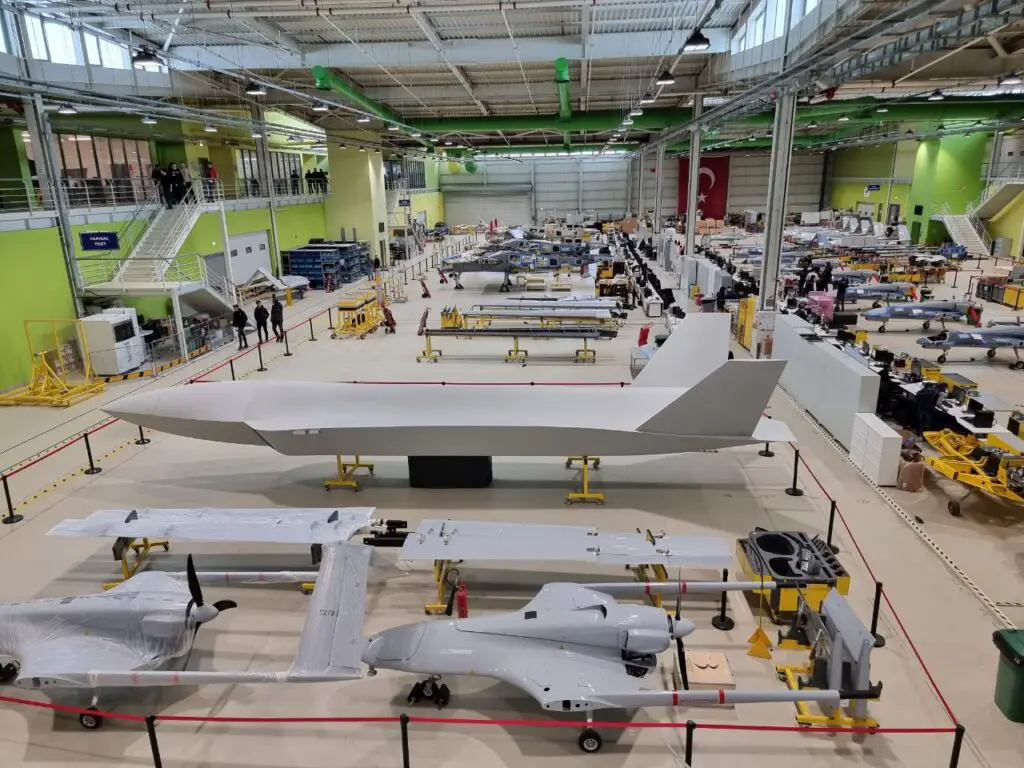BaykaDefense Chief Technology Officer Selçuk Bayraktar wrote on his Twitter account that after three and a half years, a larger and more agile plane had entered the production line. He said MİUS Unmanned Fighter Aircraft Bayraktar Kızılelma is on the way.
He posted images of the first prototype of Bayraktar Kızılelma, which is in the integration stage.
As per the company, Bayraktar Kızılelma is designed to conduct air-air combat with aggressive manoeuvres and has a low radar cross section. Bayraktar Kızılelma will have the ability to take off and land from ships with short runways and will be able to attack determined targets with the ammunition it will carry inside the hull.
In June 2021, Baykar showed the design of the future Bayraktar MİUS drone. The company had said that the MİUS project was at the conceptual design stage, and it should make its first flight in 2023.
Ukrainian Ivchenko AI-25 engines
Ukrainian Ivchenko AI-25 engines currently power the Bayraktar MİUS drones from Ivchenko-Progress (previously OKB-478 and Ivchenko Lotarev).
Ukranian engine also powers Bayraktar Akıncı UCAV.
As per the CEO of the company Haluk Bayraktar, the strategic partnership with Ukraine began in 2018, and the company plans to equip the Turkish drones with Ukrainian engines.
Russia may punish Turkey by blocking the engines
Given the Russian special operations in Ukraine, the project might suffer a setback in the production stage. Turkey sold its Bayraktar TB2 drones to Ukraine even as the U.S. and NATO countries dithered to supply high-tech equipment because of Russian objections. These drones were first used in Donbas, triggering Russia, which began amassing its armed forces in the region and subsequently launched special operations in Ukraine. Russia may punish Turkey with the stoppage of engines for the drones. Russia may become the critical market for Motor Sich engines which Ukraine inherited from the USSR. In the past, Ukraine denied these engines to Russia and tried to sell the Motor Sich to a Chinese company which the United States had objected to.
The company’s engine portfolio includes:
- AI-20 – the first in the USSR turboprop engine (TVD) that reached the designated resource of more than 20,000 hours – used on An-8, -10, -12, -32 aircraft; Be-12; IL-18, -20, -22, -38;
- AI-25 – the first in the USSR turbojet bypass engine (TRDD) with a bypass ratio exceeding 1 (m = 2.2) for a passenger aircraft – used on the Yak-40; M-15;
- D-36 – the first in the USSR three-shaft turbofan engine with a high bypass ratio (m = 5.6) – used on
- An-72, -74, -74TK-300 aircraft; Yak-42;
- D-18T – the first turbofan engine in the USSR with a thrust of more than 20 tons – used on An-124 Ruslan, An-225
- Mriya aircraft;
- D-136 – the most powerful turboshaft engine in the world (TVGTE) – used in Mi-26, -26T helicopters;
- D-27 – the world’s first turbo propfan engine (TVVD) – the use of the An-70.
The company was developing several new aircraft engines and modifications for civil and military purposes. It includes D-436 turbofan family: D-436-148FM for the An-178 transport aircraft; new generation turbofan engine with an ultra-high bypass ratio – AI-28; a further modification of the D-18T engine; a family of AI-450 turboshaft engines for light multi-purpose helicopters with a takeoff weight of up to 4000 kg; TV3-117VMA-SBM1V for 10 ton class helicopter; world’s most powerful TVGTE D-136 engines for the helicopter; TVGTD AI-450 family of light turboprop engines for light aircraft and UAV’s; D-27 turbo propfan engine for transport aircraft; AI-25T modifications for light aircraft; a family of non-afterburning AI-222 turbofan engines for fighter and advanced trainer aircraft; and AI-322 improvements.
Turkey’s chronic engine problem
According to the Turkish defence industry and government officials, Turkey’s inability to build its engines is detrimental to its defense programs.
Turkey needs an engine for the advanced TF-X fighter jet, self developed UAVs and helicopters.
The main Turkish contractor responsible for developing the engine is state-controlled Tusas Engine Industries (TEI). On June 19, 2020, the company announced the successful testing of the TJ300 small-sized turbojet engine for medium-range anti-ship missiles. The engine has a thrust of 1.3 kN.
TEI officials say that more advanced versions of the TJ300 engine will be able to power large anti-ship and land-attack cruise missiles in the future.

The T625 Gökbey helicopter made its first full flight in September 2019. TEI says it has successfully tested the TS1400 turboshaft gas generator and plans to deliver the first prototype to TAI at the end of 2020.
The development of the KTJ-3200 engine, which will equip the Atmaca and SOM cruise missiles, has been completed, says Turkey. Delivery of the engine was scheduled for the end of 2021. In addition, the development of the Arat turbojet engine has begun, which will improve the efficiency of the KTJ-3200 engines.
Ankara says the tests of the PD170 engine, designed for unmanned aerial vehicles such as Anka and Aksungur, have been completed. Work continues to upgrade this engine for other UAVs further.
None of the engines, including the KTJ-3200 and PD170, are expected to be available for the foreseeable future.
